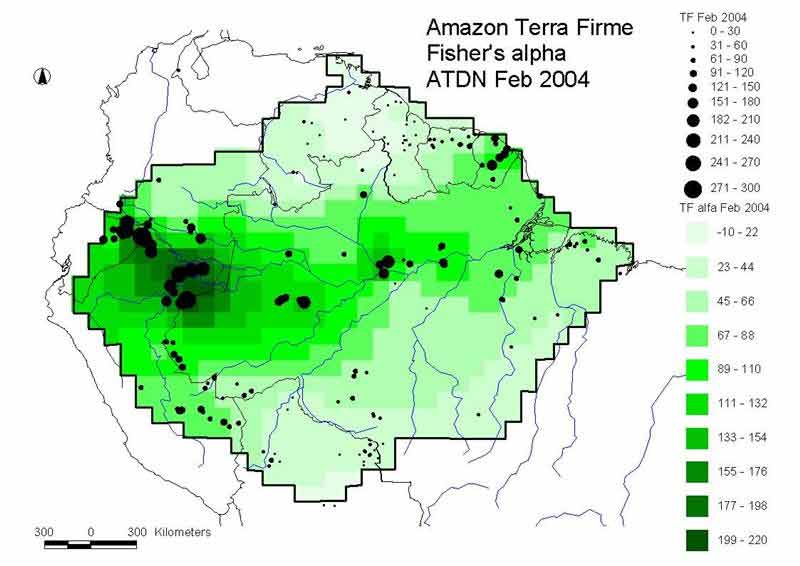| |
Trees
This map of tree diversity indicates that the greatest diversity in the Amazon, and therefore arguably the world, is located in the Ecuadorian Amazon and the Northwestern Peruvian Amazon. Dots indicate the level of tree diversity found in a particular location, and it is clear that some of the largest dots are in the Yasuní region. Note that the tree diversity in the Yasuní region is higher than in the Brazilian and southern Peruvian Amazon.
Also, the extensive and global research of the Smithsonian Tropical Research Institute (STRI) has determined that Yasuní supports one of the greatest tree diversities in the world. STRI’s Center for Tropical Forest Science has established standardized Forest Dynamics Plots in 15 tropical countries, including Panama, Columbia, Brazil, Congo, Cameroon, India, Thailand, and the Philippines.
Thus far, 25 of the 50 hectares in the Yasuní plot have been fully censused, revealing a total of 1104 species of trees and shrubs. This compares with 494 total species in a 50 ha plot in the African rainforests of Cameroon, and 300 species in the Central American forests of Panama. The only plot with comparable diversity to Yasuní is located in Lambir Hills National Park in Malaysia, where 1182 species have been found in a 52 hectare plot. However, when Yasuní’s plot is fully censused, it is projected to contain around 1,300 species, which would make Yasuní the most diverse plot among these tropical plots.
Additionally, within just one hectare of Yasuní’s plot, there are 644 tree species. The diversity of the area is highlighted by comparisons: the Panamanian plot has only 168 species per hectare, and the peninsular Malaysia plot has 497 species. To further put this number in perspective, there are nearly as many tree species in just one hectare of the Yasuní plot as there are trees native to all of North America (an estimated 680 species).
For more information on Amazonian tree diversity, check out the Amazon Tree Diversity Network at: http://www.bio.uu.nl/~herba/Guyana/Amazon_plot_network/Index.htm.
For more information on the Smithsonian Tropical Research Institute’s research plots, check out
http://www.ctfs.si.edu.
|
|

